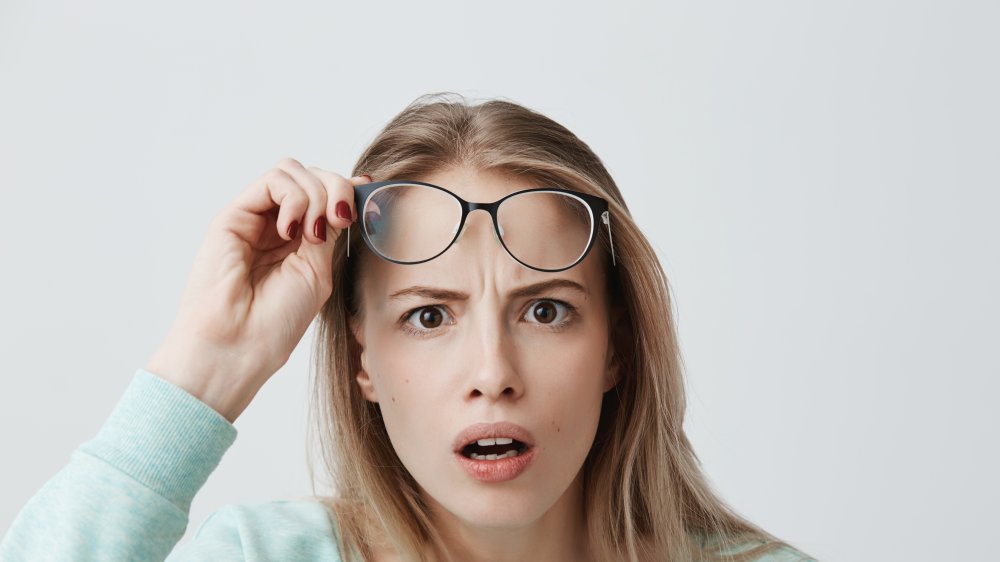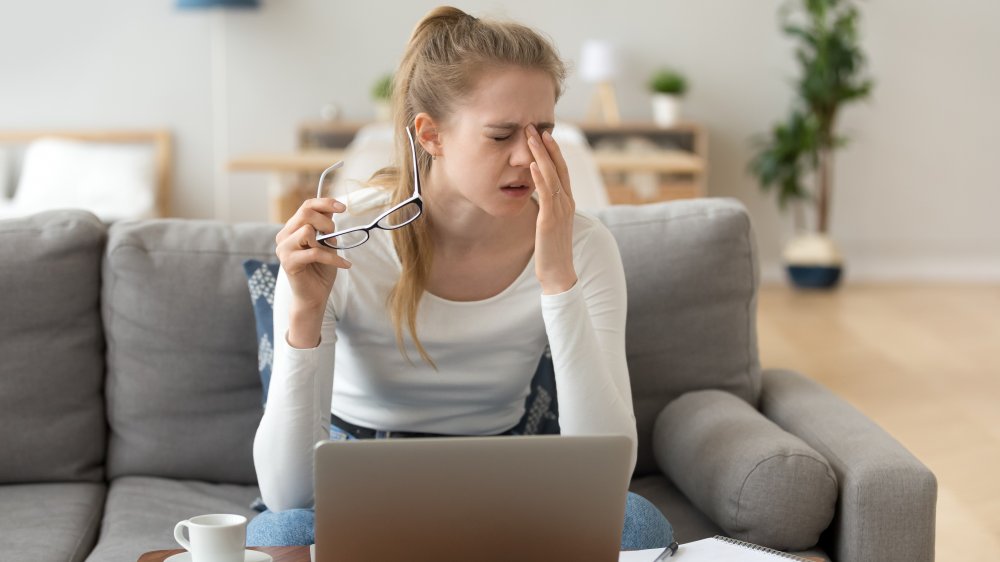Here's What It Really Means When Your Eyelid Twitches
At some point you've probably been watching television, scrolling through social media, or enjoying a warm cup of coffee when all of the sudden your eyelid starts involuntarily twitching. The sensation can range from a gentle tug to a spasm so forceful it causes the eyes to close. There are three different conditions that may be responsible for these sudden movements; eyelid twitching (myokymia), benign essential blepharospasm, and hemifacial spasm (via MayoClinic).
The most common is myokymia, which is characterized by involuntary, gentle, consistent contractions of the eyelid, most often the lower lid. This form is self-limiting, lasting from a few seconds to hours before resolving. On occasion, this can continue for several days or weeks before resolving (via Stat Pearls).
There are several known triggers of myokymia, including stress, eyelid strain, fatigue, caffeine, alcohol or tobacco use, increased screen time, medication side effect, and more.
Less common (and thought to be a result of genetic and environmental factors), benign essential blepharospasm may also be to blame. This condition tends to cause abnormal blinking of the eyes or significant eyelid spasms. Symptoms first appear in mid-to-late adulthood and progressively worsen, eventually affecting both eyes (via MedlinePlus).
Finally, a hemifacial spasm could be the cause. This type of spasm is caused by damage or irritation to the facial nerve. Typically they appear as small, barely noticeable twitches on one side of the face; however, they can progress to other parts of the face also controlled by the facial nerve (via Healthline).
How to treat eyelid twitching and when to seek medical attention
If one or more triggers has been identified as a potential cause, it is recommended to tackle them directly. Stress reduction methods like meditation, deep breathing, decreasing screen time, and setting app limits on your laptop or phone are encouraged. More recently, blue light blocking glasses have been promising to reduce eye strain. Decreasing or completely eliminating caffeine, alcohol, or tobacco may also improve symptoms. When more conservative methods fail to improve symptoms, botulinum toxin (Botox) injections can be used as an effective treatment.
While most cases are self-limiting and rather harmless, eye twitching can become frustrating or uncomfortable. It is important to seek medical attention if the twitching doesn't resolve within a few weeks, if twitching develops in other parts of the face, there is a change in vision, difficulty opening or closing the eye, drooping of the eyelid, discharge or swelling of the eyelid, or any other concerning symptom.


